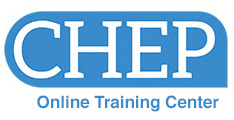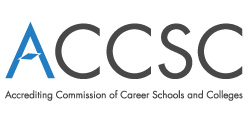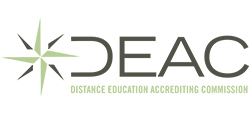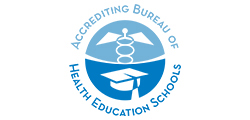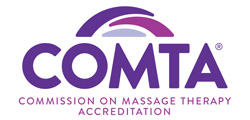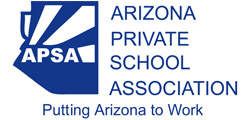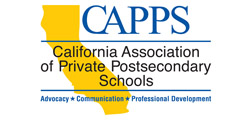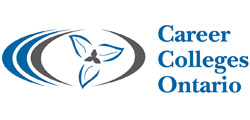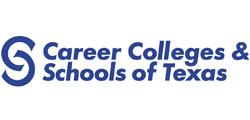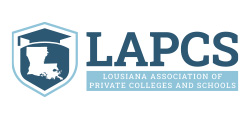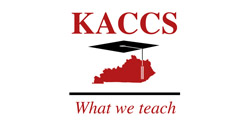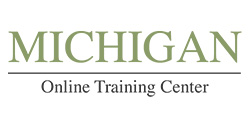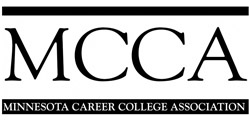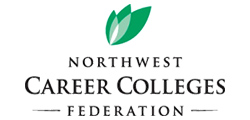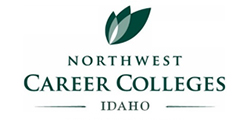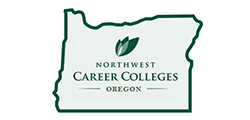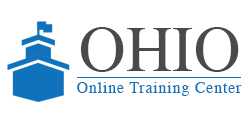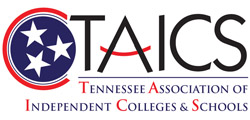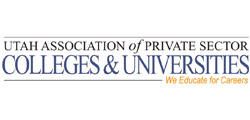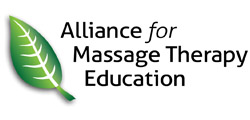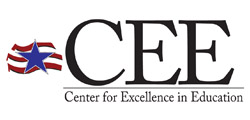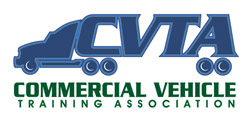Badge Evidence | Completed Courses (4 Hours Each)
ED101Effective Teaching Strategies
This introductory course covers the essential roles of a teacher and the competencies required to be a successful instructor in an educational institution. Proven techniques and strategies for planning and preparation are presented and discussed. In addition, the course offers effective methods for conducting the first class meeting and delivering course content. This course provides a solid foundation for new instructors and serves as an excellent refresher for more experienced instructors.
ED102Student Retention Methods
The instructor is the real key to student retention at any educational institution. Instructors must keep focused on student motivation and retention each and every day of class. Developing strategies for retaining students throughout the entire training sequence is both complex and rewarding. All instructors should have the goal of seeing all of their students successfully complete their class. This course helps you reach that goal by helping you to understand your students and use proven motivation and retention techniques to keep them enrolled and engaged in the learning process.
ED103Student Learning and Assessment
Educators work with students who want to learn specific skills that will lead to fulfilling careers. As educational instructors it is our job to help each student to achieve this goal. Just as you may have a particular style of teaching that you prefer, your students have preferred ways of learning. This course will help you to identify the different learning styles of your students so that you can adjust your instruction to better accommodate them. Good teachers also regularly monitor the effectiveness of their instruction by assessing their students’ learning. This course will examine several aspects of assessment including how to create good tests, how to ask effective questions and how to get your students to actively participate in their learning by asking questions themselves.
ED104Class Management Strategies
This course provides methods and techniques for managing students and class activities. We start by reviewing the steps instructors need to follow as they introduce a class to new students. We then discuss strategies to effectively deal with unfocused and challenging students. The course ends by describing common mistakes made by instructors and ways to avoid them.
ED106Enhancing Student Learning
This course provides methodologies and examples to help instructors increase content retention and application by students in need of support. The course starts by covering the skills needed by instructors to be clear communicators. We then discuss ways instructors can become effective in monitoring students and using student groups as learning tools. The course concludes by covering techniques and strategies to instruct diverse learners, including learners with disabilities.
ED111Active Learning Methods
This course provides an introduction to the concept and philosophy of active learning, and describes a variety of methods to help instructors "activ-ate" their class. The course includes active learning examples that utilize both critical and analytical thinking skills. We also identify the risks that may discourage instructors from using active learning strategies and offer suggestions for managing them. A three-step method is suggested for developing an active lesson, and a comprehensive model is offered as a guide for creative active learning strategies.
ED112Influencing Student Motivation
This course is intended to offer a practical explanation of how an instructor’s behaviors and choices can influence the motivation of students. It is not intended to be a theoretical or academic treatise about motivation. Module 1 offers useful tips that may help instructors to motivate students. Students’ security and autonomy are described as they influence motivation during instruction, questioning, activities, and evaluations. This is followed by a discussion of how motivation can be improved by enhancing students' sense of autonomy when making assignments, selecting instructional methods, implementing classroom procedures, and developing evaluations. In Module 2, intrinsic and extrinsic motivators are defined and compared. Finally, a variety of "miscellaneous motivators" are offered for instructors to consider.
ED114Questioning in the Classroom
Questioning can be one of the most effective classroom teaching strategies. However, many instructors are not familiar with the techniques and research findings associated with good questioning. This course begins by comparing and contrasting the major types of questions and their most appropriate uses. Some relevant statistics and research findings are presented, followed by a discussion of four effective questioning practices. The course concludes by offering a few tips and suggestions for instructors to consider.
ED124Flipping Your Classroom
This course will provide you with a basic overview of the background of an innovative instructional strategy called the Flipped Classroom. This instructional strategy is gaining popularity and differs from traditional instructional strategies. This course will discuss the background, driving factors, benefits, barriers, theoretical grounding, how to prepare to flip your classroom, and the components of the Flipped Classroom. The impact on student learning will also be discussed in addition to instructor preparation and the future of the Flipped Classroom.
ED125Effective and Efficient Instructional Strategies
Planning Effective and Efficient Instruction provides new and experienced instructors with practical ways to design and deliver learning experiences that establish an environment that facilitates learning. The course summarizes important academic concepts while providing specific strategies for planning lessons, reaching learners, asking questions and assessing student mastery of the course and program objectives.
ED144Student Empowerment for Learning Success
This course explores the different components of student empowerment and the value that it has in learning success. Student empowerment is a necessary component for students as they transition to and through postsecondary training. Content will be presented that will raise awareness of what student empowerment is and how it can enhance the learning process for students. Strategies are given for enhancing the development of student empowerment that can be implemented both online and onsite.
ED209Students as Customers
As opportunities for education become more prevalent, educational institutions must compete to increase, or even maintain, their student enrollment levels. More and more institutions are adopting the strategy of treating students like customers in order to be successful. This course will review the characteristics of adult learners and determine the reasons adult students leave the institution. It will discuss the concept of interacting with students as though they are customers and how the students-as-customers concept relates to the instructor and the classroom. This course will also describe the methods and techniques of effective communication. Included are guidelines and techniques for advising and mentoring students.
ED409Gamification in the Classroom
This course will explore the field of gamification and the way that gaming and gaming elements have come to impact our everyday lives, and can improve our courses. Focusing on easy-to-implement concepts, this course will help you to begin utilizing gamification elements to increase learner engagement and motivation, and increase overall student success.
The goal of this course is to help develop a better understanding of the topic and produce tangible resources to help implement plans, strategies, and ideas at your school. In addition to lecture videos, possible resource links, and assessments, you will be able to utilize the Journal and Learning Activities.
ED410Increasing Student Retention by Flipping the Classroom
The Flipped Classroom model has become one of the most commonly implemented educational models seen in classrooms today. Through this course, we will explore the basics of the flipped classroom, how and why it works to increase student retention, and go over steps to start incorporating flipped classroom elements in your courses.
The goal of this course is to help develop a better understanding of the topic and produce tangible resources to help implement plans, strategies, and ideas at your school. In addition to lecture videos, possible resource links, and assessments, you will be able to utilize the Journal and Learning Activities.
EL104Teaching and Organizing a Virtual Learning Environment
This course will provide you with basic information to teach in a virtual learning environment and understand the importance of organizing course content. You will learn about the important role technology tools play in teaching and organizing an online course. You will also learn the difference between synchronous and asynchronous learning. As the components of each are discussed, you will further identify appropriate methods, develop guidelines, organize content, and establish a pattern of teaching for each method.
EL113Active Learning in an Online Environment
This course will provide you with a basic overview of the background and history of the popular instructional method called active learning. This method differs from traditional educational methods such as the lecture model. Active learning has a definite place in education especially in the online learning environments. It is used to support teaching outcomes like critical thinking skills, interpersonal skills and knowledge acquisition that all instructors wish for their students. However, active learning it calls for a change of attitude on the part of students and the instructor in order to be successful. But the advantages far outweigh the disadvantages as it can make students enthusiastic about learning. Learn about this brave new world of teaching and learning for the next generation.
LS101Do You Manage Or Lead?
This course explores the critical differences between management and leadership. Participants will be introduced to definitions and myths about each area as well as how management and leadership must coexist for an organization to operate effectively. Participants will explore their own management/leadership tendencies.
LS102How Do You Lead?
Not everyone is suited for, or desires, a leadership position. One of the first steps to being an effective leader is to understand the desire to lead in the first place. Participants will explore their motivation to lead and develop a deeper understanding of their leader style(s).
LS103Your Leadership Impact
Beyond understanding the role of the leader, the ultimate effectiveness and impact of a leader takes into consideration the followers and the situation, too. This course defines leadership impact and explores the Interactional Framework for Leadership.
LS104Your Leadership Legacy
The higher education industry provides a wealth of opportunities and challenges for those seeking leadership positions. In this course, participants will gain a deeper understanding of the higher education sector and themselves. The importance of higher education institutions will be explored along with developing a personal leadership legacy.
LS105Your Leadership Toolkit
Get ready to add a number of skills to your toolkit as you develop as a leader! This course focuses on increased self-awareness in communication styles and learning; developing deeper understanding through empathic listening; and motivating through innovation.
LS106This Way to Leadership
This course provides you with a framework to put your self-discovery and learning into a workable plan to further develop your leadership skills. A step-by-step process is offered to help you create a meaningful Personal Leadership Development Plan (PLDP) complete with the development of SMART Goals and advice from some of today's leaders in the higher education sector.
ML111Leading and Motivating
This course provides a synopsis of the essential tasks of leadership setting direction, aligning people, and motivating others. You will learn how to recognize the skills and characteristics of effective leaders, create an inspiring vision, and energize people to support and work toward your goals.
ML113Team Management
Focus is essential to effective teamwork. In this course, you learn how to diagnose and overcome common problems - such as poor communication and interpersonal conflict - that can impede team progress. You will also learn to take corrective measures to remove team problems and improve team performance.
RT101Improving Retention through Timely Intervention
How many times have we said “if we’d only known” as a student walks out the door? No one starts classes planning to fail, but unfortunately problems do arise that present barriers to success. Students are good at identifying these problems blocking their path to success, but they frequently don’t have adequate problem solving and communication skills needed to overcome these problems. This course looks at the effect of stress on attrition, the use of tools to identify and help students at risk, and how to develop an institutional culture that shares responsibility for student success across the entire organization.




